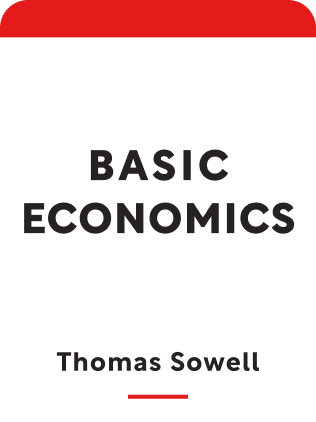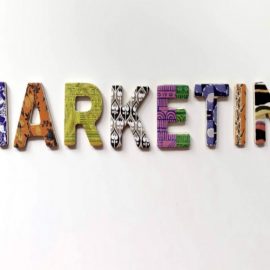

This article is an excerpt from the Shortform book guide to "Basic Economics" by Thomas Sowell. Shortform has the world's best summaries and analyses of books you should be reading.
Like this article? Sign up for a free trial here .
Have you ever wondered how an economy works—how millions of people can buy and sell goods and services without a master coordinator? Why do we use money, rather than bartering our services with each other? Why do some nations prosper, while others stay poor despite vast natural resources?
In his book Basic Economics, Stanford economist Thomas Sowell answers all of these questions and more. Containing no math, he instead explains intuitive principles that will help you understand how market transactions work and the effect of policies on the economy.
Below is a brief overview of Basic Economics: A Citizen’s Guide to the Economy by Thomas Sowell.
Basic Economics: A Citizen’s Guide to the Economy
In his book Basic Economics, Thomas Sowell provides an incredibly useful, broad introduction to the subject of economics. The following is a quick summary of the key points.
Prices Allocate Resources
How are scarce resources allocated across an economy?
The straightforward way is for a central authority to decide what to do. In a feudal economy, the lord tells people what to grow and how to sell it. The Soviet Union operated similarly, with the government determining how much steel to produce in Bulgaria and how much wheat to be grown in Ukraine.
The problem with this method is that economies are so complex, with many millions of products and services, that allocating resources optimally across millions of items is incredibly difficult. Counterproductive incentives also arise in these centralized systems, as we’ll discuss later.
Instead of a central authority, market economies use prices to allocate scarce resources. Prices allow individuals to bid higher for goods that have more value to them. Prices connect market participants in a complex network without a central coordinator.
Prices allow producers and consumers to ignore why things are getting cheaper or more expensive – they can simply make decisions based on prices alone.
Prices provide financial incentives – profits and losses – to affect behavior in the use of resources. Losses force the producers to stop producing what consumers don’t want, thus shifting resources from wasteful to more productive activities.
Profits are the cost to society for efficiency. If profits were counterproductive, you’d see nonprofits taking over for-profit industries, or socialism providing higher standards of living than capitalism – but in reality the reverse is more likely to happen.
When prices are artificially altered relative to their natural market price, inefficiencies result, causing market distortions.
- Rent control causes artificially low prices, causing undersupply and overconsumption of housing.
- Minimum wage laws cause artificially high prices, reducing employment and increasing discrimination (since they flatten a range of workers into a single price).
Businesses
Much is said about “outsized profits” earned by businesses. They seem like unnecessary arbitrary charges added onto the cost purely to benefit the owners. But this ignores the risks inherent in creating businesses. Half of all new businesses fail in 4 years, and most former titans (like Kodak) eventually go bankrupt as they fail to adapt to changing circumstances.
Profits provide incentives for businesses to produce goods that consumers most want at the lowest cost. Without these incentives, businesses would be less efficient, producing lower quality goods with less concern for cost, as in the Soviet Union.
Furthermore, there are natural limits to the profits that can be earned – high profits in one sector encourage competition, which reduces profits and increases quality. Without this competition for profits, businesses would have less incentive to adapt to changing conditions to maximize consumer value. Business profit is the price society pays for efficiency.
Work and Pay
Labor – people’s time, energy, knowledge, and skills – is a scarce resource. Paying for work provides incentives for people to work and provides a set of constraints on employers.
Just like any other resource, pricing labor allocates scarce resources that have alternative uses. Paying engineers higher salaries than artists shifts people’s time toward engineering, where their output to society may be larger.
What determines a person’s pay?
- On the demand side, the productivity that the person is able to produce to the employer is the upper limit. A worker who added $100,000 to a company but asked for $150,000 in salary would not be hired. This would be unprofitable for the company.
- On the supply side, the pay other people with similar output are willing to accept is the lower limit. That same worker would not be able to get a salary of $80,000, if there are other comparable workers willing to work for $60,000.
Artificial Prices in Labor Markets
Human labor is a resource like any other, and that markets price resources efficiently without the need for central control.
However, there are artificial changes to labor prices in the form of artificial floors. Minimum wage laws, mandatory benefits, job security, working conditions, collective bargaining and occupational licensing all have the same effect – they artificially increase the price of labor above what they would be in free competition. This causes a surplus of supply and less demand for labor.
Because of the surplus in supply, buyers (employers) can be more selective about who they hire. This typically disadvantages younger, less skilled, and minority workers, who become delayed in acquiring job skills and experience and thus stifle their lifetime income.
If there were no minimum wage laws in the United States, more people would be employed, with the median person earning lower wages than with minimum wage laws. This “spreads employment more evenly.” And the workers still retain free choice – if they were clearly better off not working for the employer at a lower wage, they would choose not to work. Instead, minimum wages tend to make low-wage workers worse off by closing off one of their already limited options.
Money and Banking
Money facilitates the production and distribution of wealth.
Barter of goods and services is awkward – if you make a chair, you may not want enough apples for the value of a chair, nor will the apples retain value for long. If you do accept apples, you may then need to spend time finding someone else who will trade for apples. You might also produce fewer chairs, knowing it’s difficult to get paid for your chairs.
Money allows chairs and apples to be exchanged for an intermediary thing, which can be subdivided into very small units. When people agree on what will be used as the intermediary of exchange, that becomes money. To an individual, money is equivalent to wealth only because it can be exchanged for real goods and services.
Banking
What purpose do banks serve? First, they guard money, for which they have economies of scale compared to individual businesses.
More importantly, banks supply businesses with money and lines of credit to businesses to bridge them over unpredictable drops in income and allow them to undertake large investments. Here banks also have economies of scale and risk pooling, reducing lending costs below those of their customers. In turn, businesses that borrow can operate on a larger scale, reducing cost and improving societal standards of living.
Government Functions
Market transactions occur within a framework of rules, and those rules must be enforced for efficient economies to arise.
Governments serve the function of enforcing rules, like property rights, that allow market transactions to occur. They also guard against negative externalities of transactions (like a coal plant polluting air).
Government Debt
The national debt tends to grow with inflation, population growth, and national income growth.
The debt is better considered not as an absolute number but rather a percentage of GDP.
In some cases, a high national debt is secondary to other concerns, such as fighting World War II. However, a high peacetime national debt is troubling, since there is no reduction in spending in sight as there is in the end of war.
Generally, to pay for current benefits like the military and civilian personnel, governments use tax revenues, allowing those benefited to pay. For investment projects like highways and schools, governments sell bonds, go into debt, and essentially push the cost onto future generations who will benefit from the investment.
When these purposes are confused – when the government goes into debt to fund current expenditures – this is as sensible as an individual borrowing more than current income to pay for dining this year. Even though this is politically favorable since it avoids raising taxes, future generations will pay the price.
The Incentives of Politicians
Politicians have different incentives from those of their constituents. Their main incentive is to be re-elected, so they tend to enact popular-sounding short-term policies that have negative long-term effects. They subsidize vociferous small groups of voters at the expense of taxpayers as a whole. They also have incentive to spend taxpayer money that is not their own.
Contrast political elections with the marketplace. In the marketplace, decisions can be made 1) instantaneously 2) for individual goods and services 3) that are wholly finished. In contrast, in politics, candidates 1) are chosen only once every several years, 2) come as a “package deal” – all their stances must be accepted or rejected in whole, 3) can only convey promises, not finished accomplishments, and thus constitute speculation.
When setting economic policy, it’s important to understand 1) the inherent tradeoffs, 2) the policy’s consequences and incentives, rather than their intention. Policies that sound good may have terrible second-and third-order effects.
International Trade
International trade is not a zero-sum game, where one country is a winner and another is a loser. Both sides must gain or it makes no sense to trade. There is no fixed number of jobs for countries to fight over – when countries become more prosperous, they tend to create more jobs. Trade may be helpful due to absolute advantages or comparative advantages.
The vast differences in wealth between people living in different countries can be emotionally troubling. However, Thomas Sowell argues that given the vast differences in factors underlying economies (geography, natural resources, culture), as well as the interaction of such factors over millennia, it is impossible to expect economic equality across the world.

———End of Preview———
Like what you just read? Read the rest of the world's best book summary and analysis of Thomas Sowell's "Basic Economics" at Shortform .
Here's what you'll find in our full Basic Economics summary :
- Why we use money, rather than bartering our services with each other
- Why some nations prosper, while others stay poor despite vast natural resources
- How rent control might actually reduce housing supply and quality






